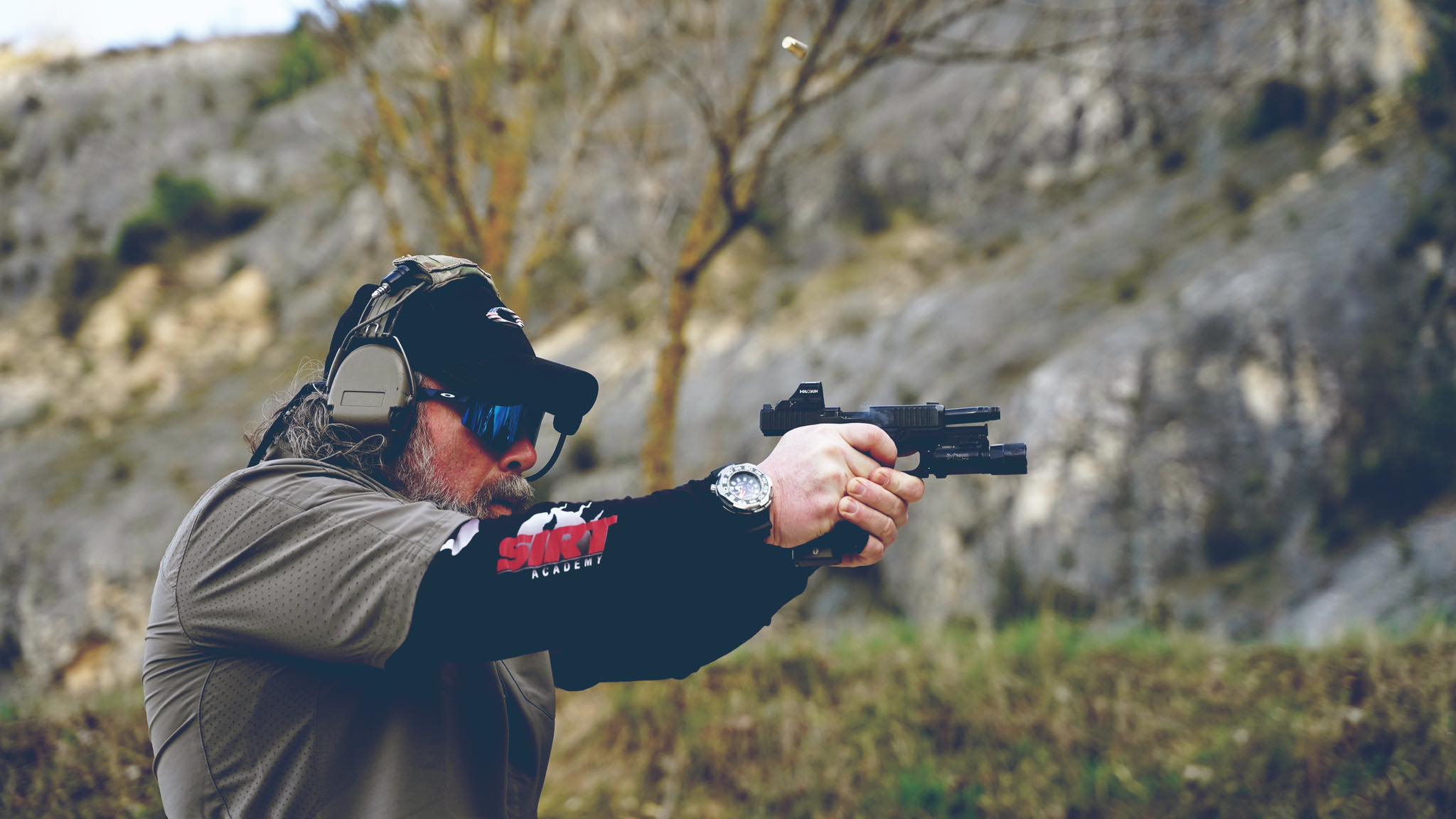Introduction: Distance Is a Technical Parameter, Not a Tactical One
One of the most common mistakes I have addressed time and time again is confusing or mixing tactics with technique. On this topic, if you are interested, there is both a video and an article where I explore this subject in depth.
When we talk about handguns, especially their defensive or professional use, logic and common sense dictate that we are referring to close-range engagements. The idea of using a handgun beyond 25 or 30 meters in an urban setting is simply unrealistic, both from a statistical standpoint and in practical terms. It would require truly extreme conditions and justifications.
Statistics Reveal the Real-World Application of the Distance Parameter
Statistics provide an objective framework. According to data from the Federal Bureau of Investigation (FBI), which over the years has conducted various studies based on reports from different departments, 44% of officers were shot at a distance of less than 1.5 meters, 21% between 1.8 and 3 meters, and only 35% beyond 3 meters. In a randomized sample of 237 gunfights, it was shown that 98% of handgun engagements occur between 0 and 7.5 meters, with a significant concentration between 0 and 4.5 meters.
However, this is not the reason we begin shooting at such short distances.
We start close because the mechanical and biomechanical structures of shooting, what we call technique, are built incrementally, beginning at very short distances.
Distance and Movement Are Not Neutral Parameters
Distance, like movement, is a parameter that must be handled with care, caution, and competence. Distance is not a neutral parameter; it is affected by variables tied to each of the fundamental elements in play: the shooter, the platform, the target, and the environment.
The Shooter
If a novice shooter, who has not yet built or stabilized the mechanical and biomechanical foundations of shooting, mishandles the distance parameter by training beyond 15 to 18 meters, it can be downright counterproductive and significantly delay the development of their mechanical structures.
The Platform
The firearm is a thermobalistic machine that generates energy. Depending on its structural and mechanical characteristics, it can significantly influence how distance is managed. Another critical factor is the type of sights the platform is equipped with, as these heavily affect target acquisition, precision, acquisition speed, and the perception of error.
The Target
The target most directly determines how distance interacts with performance through two essential factors: its size and its static or dynamic condition. Modifying the target’s dimensions allows us to shift the difficulty level and biomechanical perception of error without increasing distance.
The Environment
The environment is another crucial factor that influences distance interaction. Just think of lighting conditions and how much they affect target visibility, or more broadly, how the shooter, platform, and target interact within specific environmental contexts.
Micromechanics and Precision: Where the True Structure of Distance Is Born
When we talk about distance, it is essential to understand a fundamental concept. You do not build shooting mechanics with distance; you build distance through shooting mechanics.
The technical structure is developed from 0 to 10 or 15 meters, using targets of varied shapes and sizes.
Micromechanics, meaning the further refinement of the gesture, the part that solidifies the structure, happens between 0 and 5 to 7 meters, using extremely small targets.
For a beginner, shooting beyond 15 to 18 meters is absolutely counterproductive if a solid mechanical structure has not been established beforehand.
Distance acts as a magnifier of error but also as a significant diagnostic contaminant, especially during the early phases of building fundamentals.
For example, consistently hitting a 5 mm target at 5 meters is extremely difficult and far more complex and effective than hitting the classic Alpha Zone at 15 or 18 meters.
END OF PART 1



